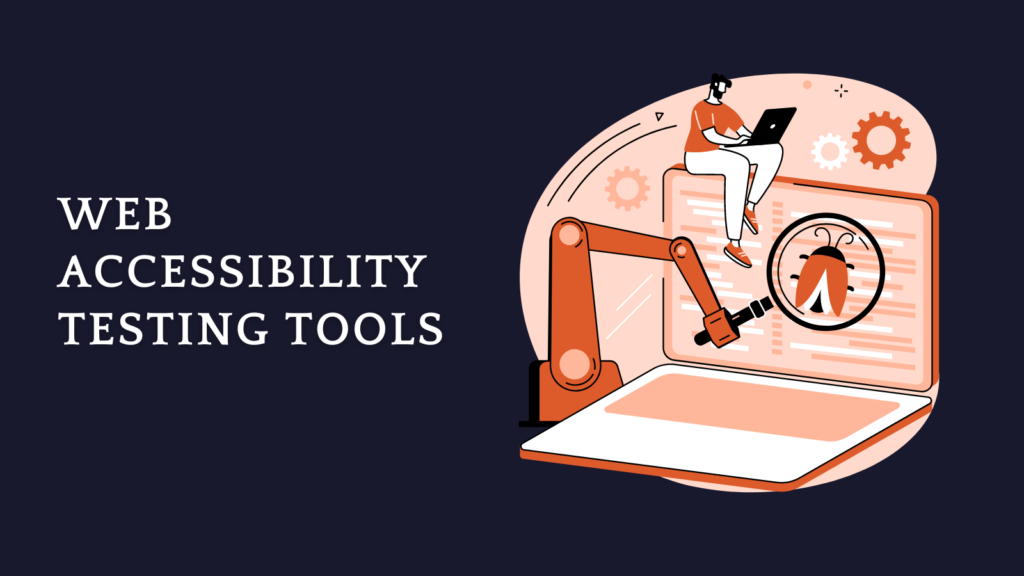
Unlocking the ROI of Web Accessibility: How Testing Tools Drive Business Success?
In today’s digital landscape, where online presence is paramount for businesses to thrive, ensuring web accessibility isn’t just a moral obligation; it’s a strategic imperative. With an ever-growing emphasis on inclusivity and user experience, companies are realizing the tangible benefits of making their digital platforms accessible to everyone, including those with disabilities. Small Business Cybersecurity can benefit from web accessibility, as a wider user base often translates to a larger pool of potential security vulnerabilities. However, the journey toward web accessibility isn’t merely about ticking compliance boxes; it’s about recognizing the profound impact it can have on the bottom line. In this blog, we delve deep into the ROI of web accessibility, elucidating why investing in web accessibility testing tools is a smart business decision.
Understanding Web Accessibility Testing Tools
Before delving into the ROI aspect, let’s first grasp the significance of web accessibility testing tools. Accessibility testing tools play a pivotal role in this endeavor by serving as the frontline evaluators of inclusivity and usability. These tools serve as the digital architects’ magnifying glass, meticulously scrutinizing every aspect of a website’s design and functionality to ensure it meets the standards of accessibility.
At the core of these tools lies their ability to simulate user experiences, offering a glimpse into how individuals with disabilities navigate and interact with digital content. Whether it’s emulating screen reader usage for visually impaired users or assessing keyboard navigation for motor-impaired individuals, these simulations provide invaluable insights into the accessibility barriers that users may encounter.
Moreover, web accessibility testing tools go beyond mere identification of issues; they serve as catalysts for improvement. By flagging potential accessibility barriers and highlighting areas for enhancement, these tools empower developers and designers to iterate and refine their creations, ultimately fostering a more inclusive digital environment.
The Business Case for Web Accessibility
Expanding Reach and Market Potential
By ensuring web accessibility, businesses open their doors to a larger audience. Approximately 15% of the world’s population lives with some form of disability, representing a significant market segment. By leveraging accessibility tools, businesses can pinpoint and address barriers, ensuring that their digital presence resonates with all potential customers, regardless of their abilities.
Enhancing Brand Reputation and Loyalty
In today’s socially conscious consumer environment, consumers gravitate toward brands that demonstrate a commitment to inclusivity and social responsibility. A study on healthcare management in India can explore how web accessibility improves ROI by increasing patient engagement. Web accessibility testing tools play a pivotal role in this process, enabling businesses to uphold their commitment to inclusivity by identifying and remedying accessibility barriers, thereby bolstering brand reputation and fostering long-term customer loyalty.
Read: Unlocking the Potential of SAP IBP to Transform Businesses
Mitigating Legal Risks and Costs
Non-compliance with accessibility standards can lead to legal ramifications, including lawsuits and hefty fines. Through continuous monitoring and optimization facilitated by these tools, businesses ensure ongoing compliance with accessibility standards, safeguarding themselves against legal entanglements and preserving their financial resources for growth and innovation.
Improving SEO Performance
Accessibility features such as descriptive alt text, proper heading structures, and semantic HTML not only benefit users with disabilities but also contribute to better search engine rankings. Accessibility testing tools play a pivotal role in optimizing websites for improved SEO performance by identifying areas for enhancement. By ensuring that digital assets are accessible to all users, these tools contribute to increased organic traffic and enhanced visibility in search engine results, driving business growth and online prominence.
Boosting User Engagement and Conversion Rates
A user-friendly and inclusive experience leads to higher engagement levels and, ultimately, increased conversion rates. By addressing accessibility barriers identified through testing tools, businesses create an environment where every user can navigate and interact with ease, fostering deeper engagement and trust. Custom software success can be significantly boosted by ensuring web accessibility, expanding your user base and increasing ROI. As users feel empowered to interact with brands on their terms, conversions naturally follow, driving revenue and business success. In essence, investing in web accessibility testing tools isn’t just a matter of compliance; it’s a strategic imperative for businesses seeking to enhance user engagement, drive conversions, and secure their competitive edge in the digital landscape.
The Financial Benefits of Accessibility
Investing in web accessibility is not just an expense, it’s an investment with a significant return. Here are some key financial benefits:
- Increased brand loyalty and customer satisfaction: When users with disabilities can easily navigate and interact with your website, they are more likely to trust and engage with your brand, leading to repeat business and positive word-of-mouth.
- Improved search engine optimization (SEO): Many web accessibility best practices, such as clear navigation and semantic code, also align with SEO principles, leading to better search engine rankings and increased organic traffic.
- Reduced risk of legal liabilities: Non-compliance with accessibility regulations can result in lawsuits and hefty fines, which can be easily avoided by proactively addressing accessibility concerns.
Conclusion
Investing in web accessibility is not just about compliance or ethical obligations. It’s a strategic business decision that unlocks a wider market reach, fosters brand loyalty, and ultimately contributes to your bottom line. From expanding market reach and enhancing brand reputation to mitigating legal risks and boosting user engagement, the dividends of prioritizing web accessibility extend far beyond compliance.
In today’s competitive landscape, where user experience defines success, embracing accessibility isn’t just good ethics; it’s good business sense. So, let’s harness the power of web accessibility testing tools to create a digital world where everyone can participate fully, driving both societal progress and business success.
Author’s Bio:
Peter serves as a technical writer at Accessibility Analyzer and has been closely following the web development landscape for more than 3 years now. He’s also been writing on web design and other technical topics. When not working, you can find him catching up on the recent technology and fashion trends.